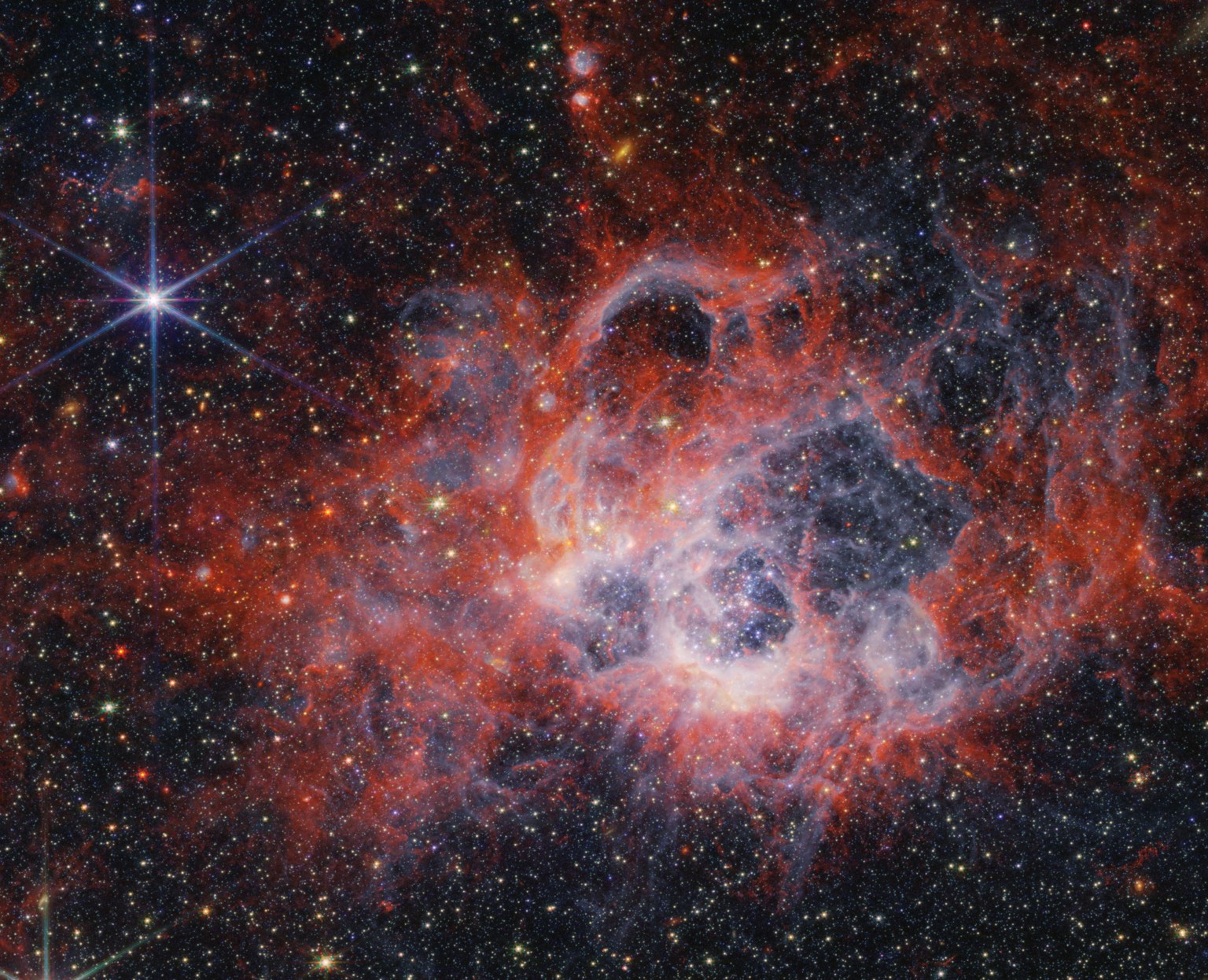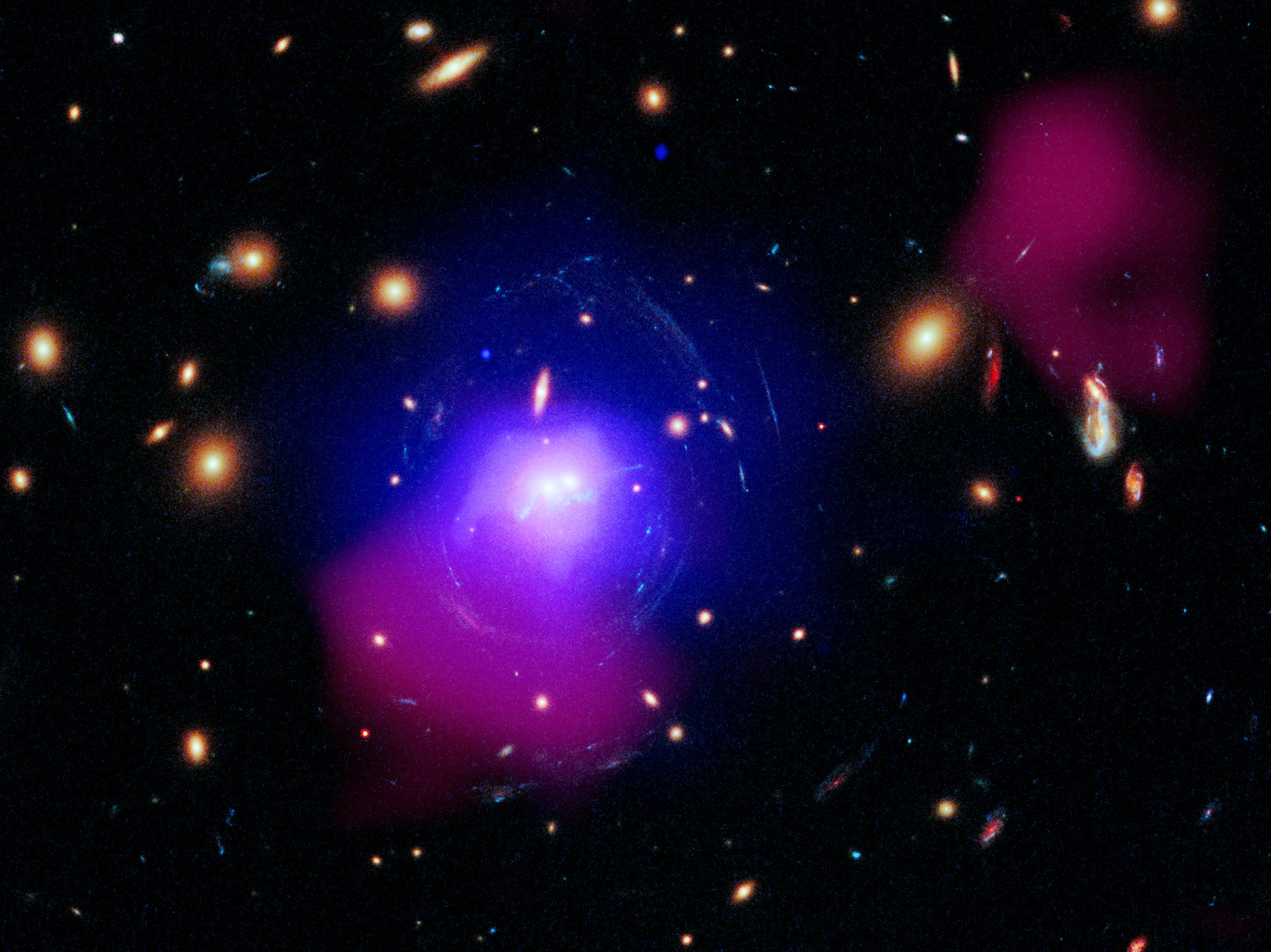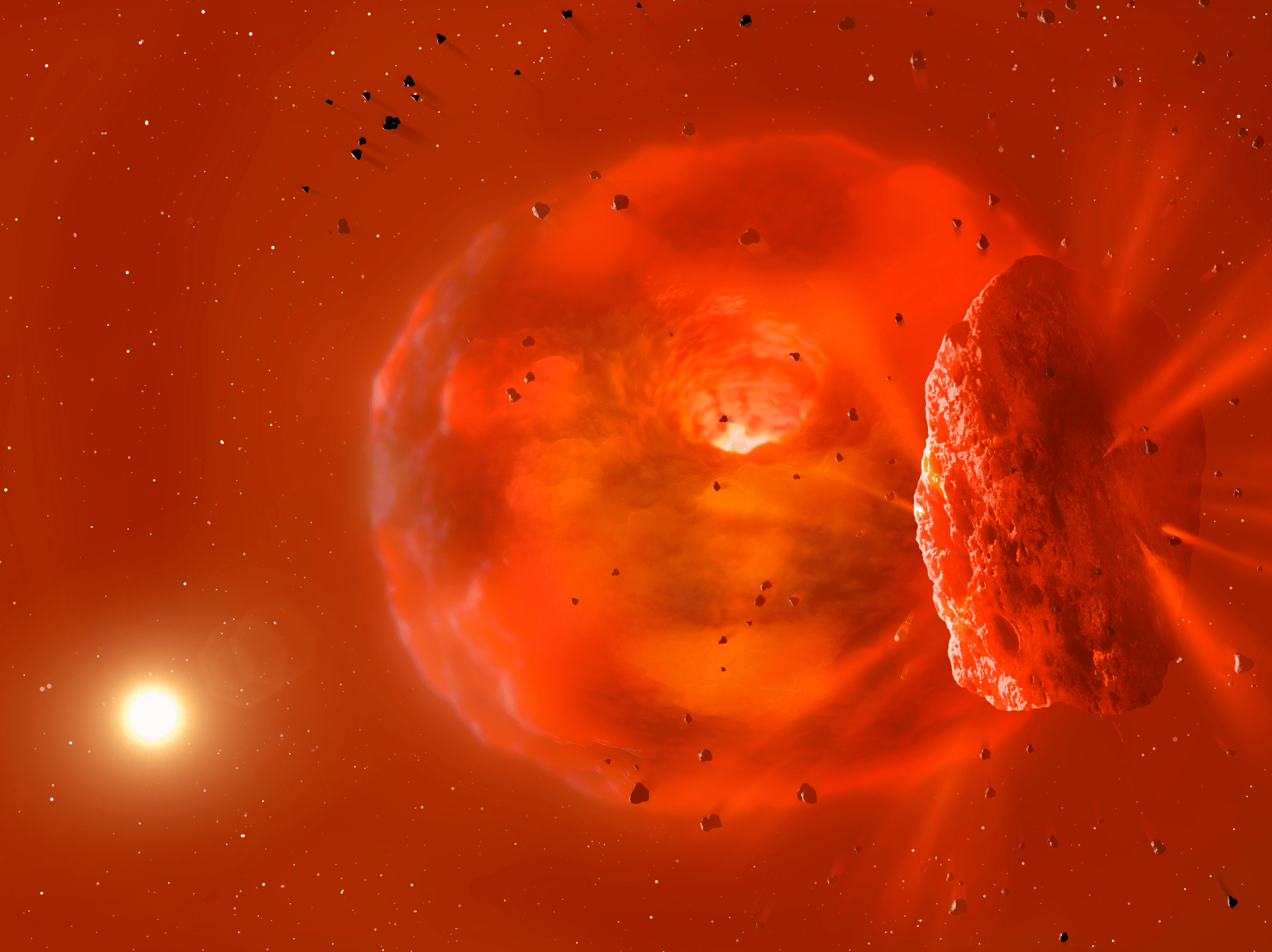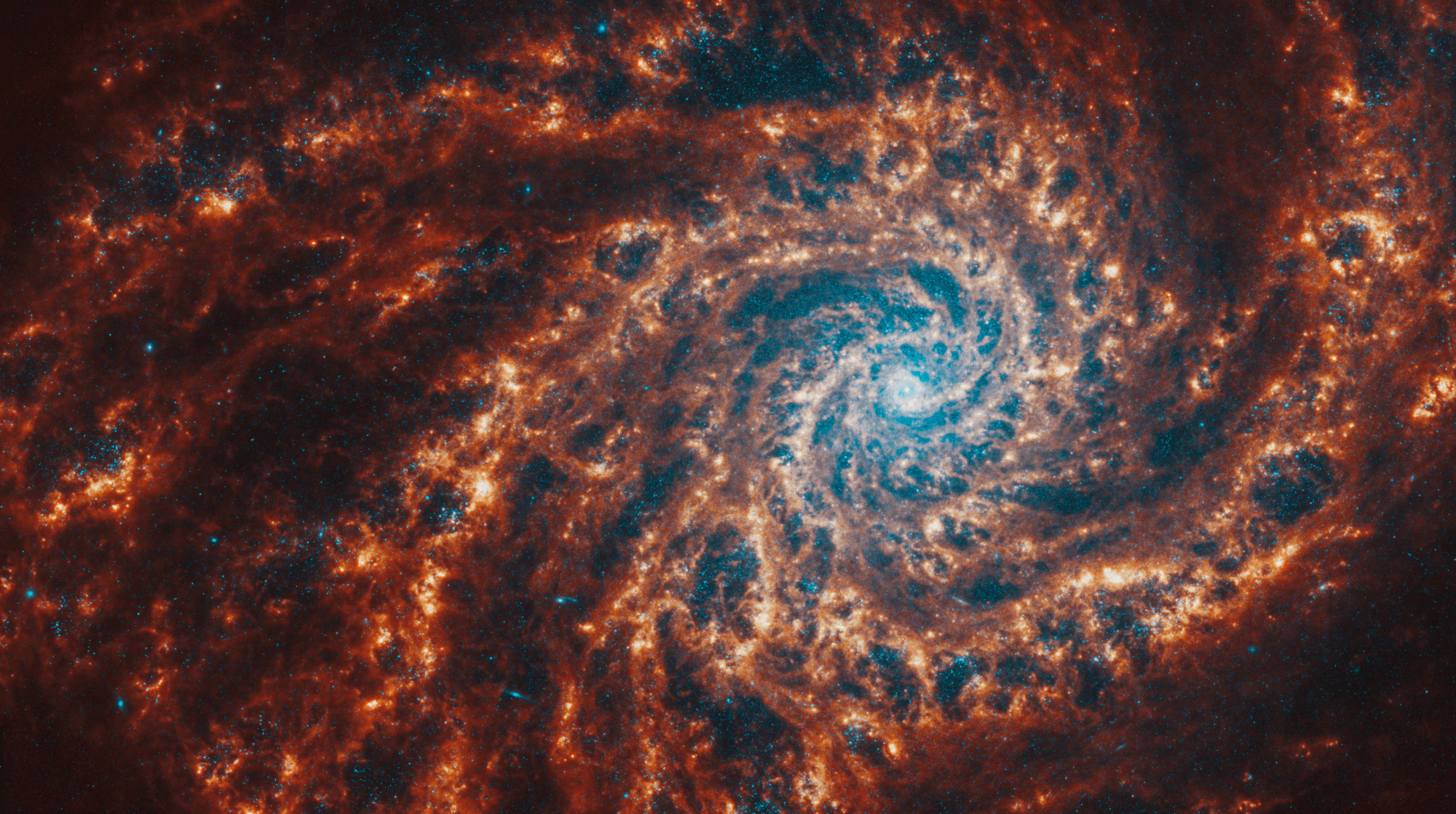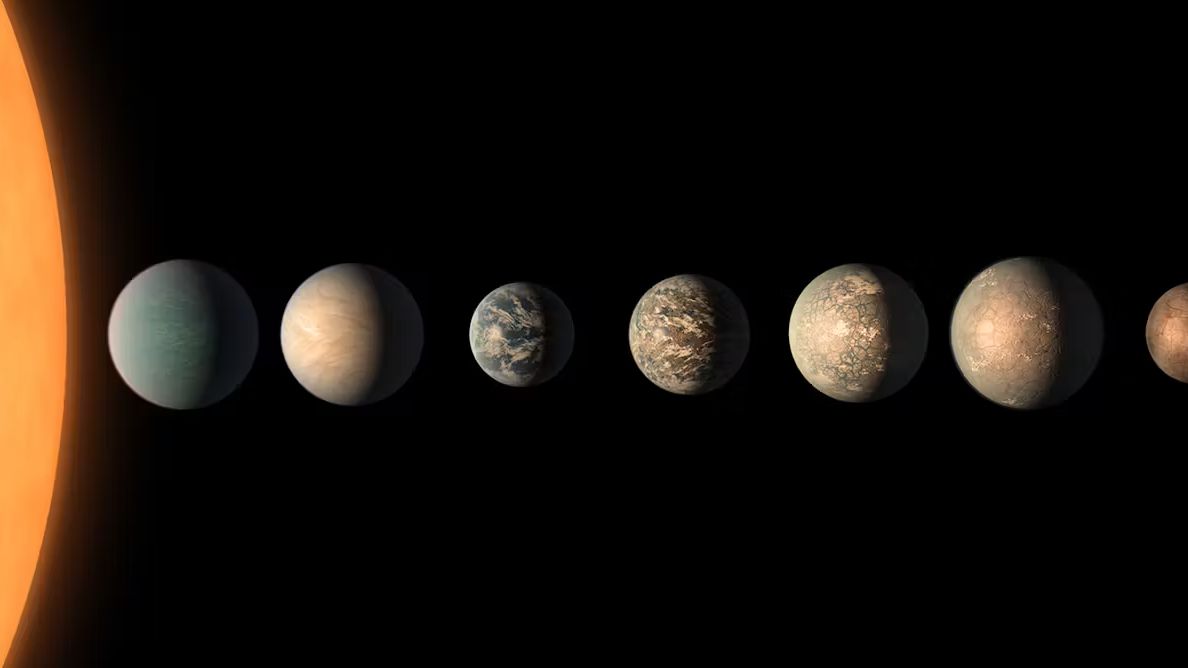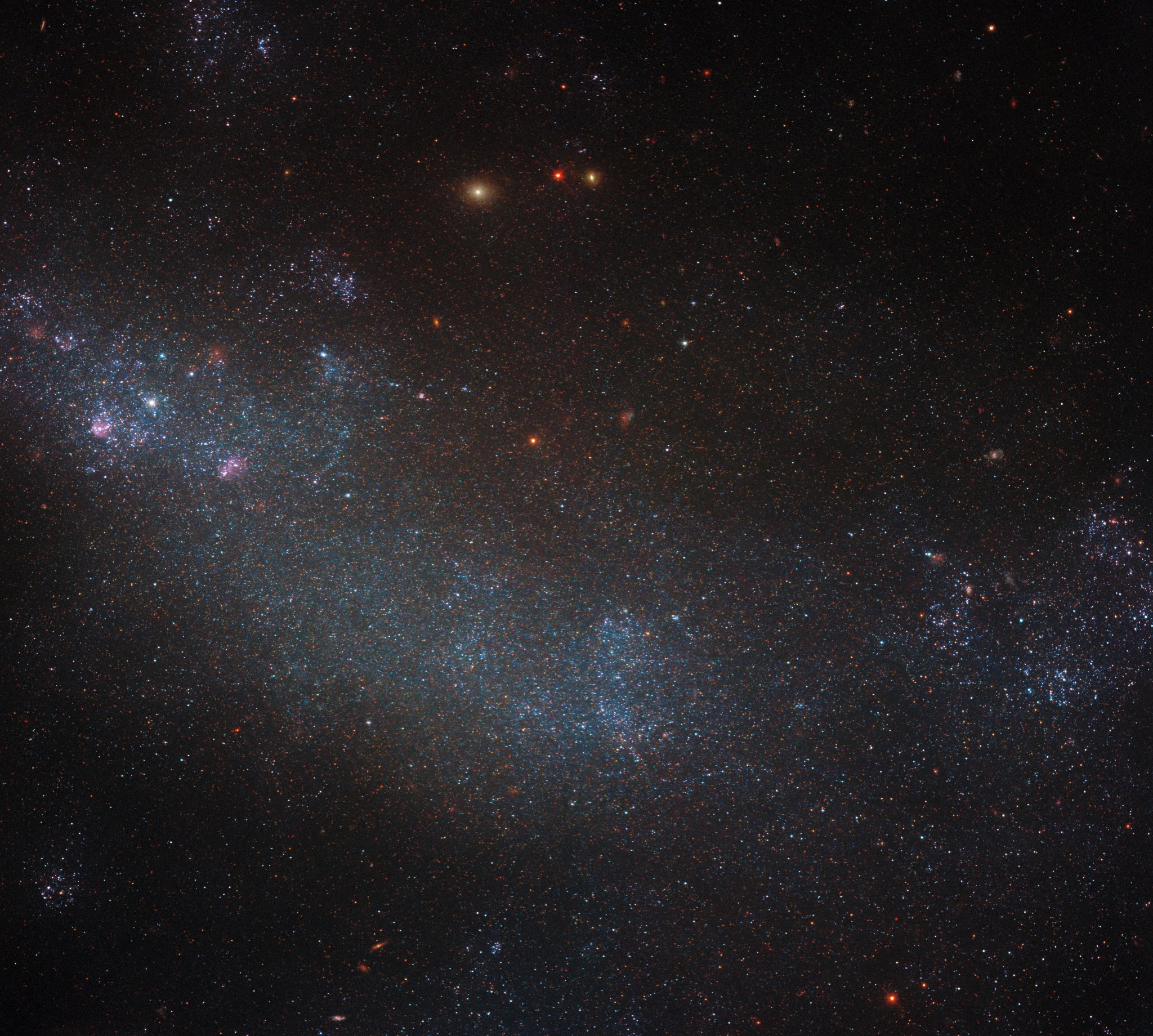4 Min Read Peering Into the Tendrils of NGC 604 with NASA’s Webb Star-forming region NGC 604. Credits: NASA, ESA, CSA, STScI The formation of stars and the chaotic environments they inhabit is one of the most well-studied, but also mystery-shrouded, areas of cosmic investigation. The intricacies of these processes are now being unveiled like never before by NASA’s James Webb Space Telescope. Two new images from Webb’s NIRCam (Near-Infrared Camera) and MIRI (Mid-Infrared Instrument) showcase star-forming region NGC 604, located in the Triangulum galaxy (M33), 2.73 million light-years away…
Read MoreTag: The Universe
Stellar Beads on a String
Galaxy cluster SDSS J1531+3414 X-ray: NASA/CXC/SAO/O. Omoruyi et al.; Optical: NASA/ESA/STScI/G. Tremblay et al.; Radio: ASTRON/LOFAR; Image Processing: NASA/CXC/SAO/N. Wolk Astronomers have discovered one of the most powerful eruptions from a black hole ever recorded in the system known as SDSS J1531+3414 (SDSS J1531 for short). As explained in our press release, this mega-explosion billions of years ago may help explain the formation of a striking pattern of star clusters around two massive galaxies, resembling “beads on a string.” SDSS J1531 is a massive galaxy cluster containing hundreds of individual galaxies and huge reservoirs of hot gas and dark…
Read MoreSouth Pole Telescope has a ‘treasure map’ to the secrets of dark matter
Ancient cosmic light that has uniformly filled the universe since around 400,000 years after the Big Bang could act like a treasure map that guides scientists to the secrets of dark matter. The Cosmic Microwave Background (CMB) refers to the first light to freely travel across the universe. Its journey began after space had expanded and cooled enough to allow electrons and protons to form the first atoms, meaning electrons were no longer endlessly scattering photons, and the universe instantly went from being opaque to being transparent. The CMB, or…
Read MoreMajor X-ray sky survey could relieve crisis surrounding the universe’s ‘lumpiness’
A new analysis of how galaxy clusters evolved over the 13.8-billion-year history of the cosmos could help solve a long-standing tension surrounding the ‘lumpiness’ of our universe’s matter content. Down the line, it may also help scientists solve a host of other cosmic mysteries. The first data from the eROSITA all-sky survey of cosmic X-ray sources, which completed 4.5 full sky surveys in February of 2022, contained precision measurements of both the amount of total matter in the universe and the matter’s level of smoothness, or “homogeneity.” These findings could…
Read MoreOur universe is merging with ‘baby universes’, causing it to expand, new theoretical study suggests
Our universe is expanding at an ever-accelerating rate — a phenomenon that all theories of cosmology agree upon but none can fully explain. Now, a new theoretical study offers an intriguing solution: Perhaps our universe is expanding because it keeps colliding with and absorbing “baby” parallel universes. Studies of the cosmic microwave background, the afterglow of the Big Bang, have revealed that our universe is experiencing accelerated expansion. For this observation to fit with the main theory of cosmic evolution — called the Standard Cosmological Model — physicists assume that…
Read MoreDiscovery Alert: Glowing Cloud Points to a Cosmic Collision
3 min read Discovery Alert: Glowing Cloud Points to a Cosmic Collision This illustration depicts the aftermath of a collision between two giant exoplanets. What remains is a hot, molten planetary core and a swirling, glowing cloud of dust and debris. Mark A. Garlick The Discovery: A glowing cosmic cloud has revealed a cataclysmic collision. Key Facts: Even within our own solar system, scientists have seen evidence of giant, planetary collisions from long ago. Remaining clues like Uranus’ tilt and the existence of Earth’s moon point to times in our…
Read MoreSpiral Galaxy NGC 4254’s Dazzling Swirls
It’s oh-so-easy to be mesmerized by this spiral galaxy. Follow its clearly defined arms, which are brimming with stars, to its center, where there may be old star clusters and – sometimes – active supermassive black holes. NASA’s James Webb Space Telescope delivered highly detailed scenes of this and other nearby spiral galaxies in a combination of near- and mid-infrared light. NASA, ESA, CSA, STScI, Janice Lee (STScI), Thomas Williams (Oxford), and the PHANGS team NGC 4254, a spiral galaxy, is resplendent in orange and blue in this Jan. 29,…
Read MoreOrbital resonance — the striking gravitational dance done by planets with aligning orbits
Planets orbit their parent stars while separated by enormous distances – in our solar system, planets are like grains of sand in a region the size of a football field. The time that planets take to orbit their suns have no specific relationship to each other. But sometimes, their orbits display striking patterns. For example, astronomers studying six planets orbiting a star 100 light years away have just found that they orbit their star with an almost rhythmic beat, in perfect synchrony. Each pair of planets completes their orbits in…
Read MoreHubble Spots a Galaxy Shrouded by Stars
2 min read Hubble Spots a Galaxy Shrouded by Stars This Hubble image shows irregular galaxy, ESO 245-5, located some of 15 million light-years from Earth. ESA/Hubble & NASA, M. Messa This NASA/ESA Hubble Space Telescope image shows a densely packed field of stars laid upon a background of dust, gas, and light from more distant celestial objects. There are so many stars in this image’s field of view that it may be a little tricky to discern that you are in fact looking at a galaxy. Known as ESO…
Read MoreNASA’s Hubble Traces ‘String of Pearls’ Star Clusters in Galaxy Collisions
3 min read NASA’s Hubble Traces ‘String of Pearls’ Star Clusters in Galaxy Collisions Galaxy AM 1054-325 has been distorted into an S-shape from a normal pancake-like spiral shape by the gravitational pull of a neighboring galaxy, seen in this NASA Hubble Space Telescope image. A consequence of this is that newborn clusters of stars form along a stretched-out tidal tail for thousands of light-years, resembling a string of pearls. They form when knots of gas gravitationally collapse to create about 1 million newborn stars per cluster. NASA, ESA, STScI,…
Read More